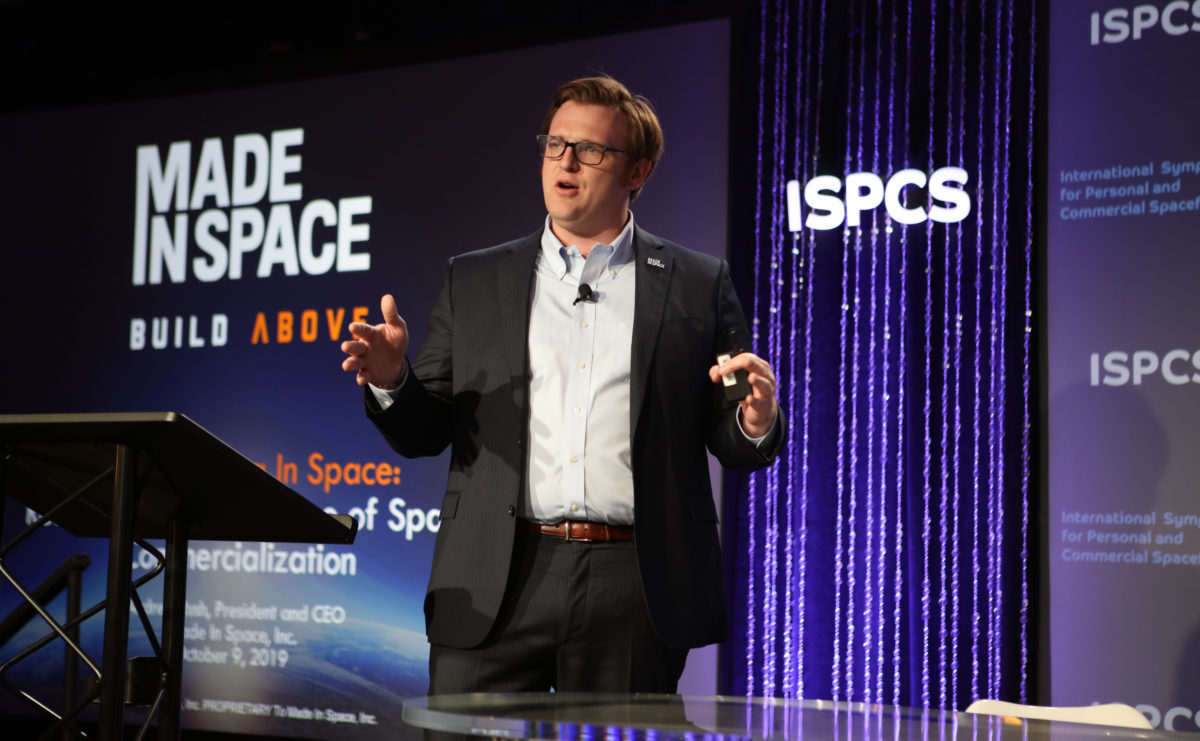
The world is entering a new era of space, one that will see us venture farther than ever before and utilize the space environment in completely new ways. Artemis is taking us back to the Moon and onwards to Mars, and SpaceX and NASA just successfully launched the first commercial crewed mission to the International Space Station. Milestones like these signal a bright future for humanity’s sustained presence off our planet and a strong global space economy.
This new era of space depends on emergent technology that enables us to go farther and stay longer. We will need capabilities that maximize efficiency and sustainability, lower cost, and make the most of the space environment. In-space robotic manufacturing and assembly, by which structures for space can be built in space instead of on Earth, has been recognized as one of these emergent technologies that will transform both our ability to maintain a sustained presence in space and the global space economy. In-space manufacturing will lower the cost of launching to and operating in space and deliver new capabilities to those conducting business and research in low Earth orbit, the Moon, and beyond.
Provides an Economic Motivator to Accelerate Space Exploration
In-space manufacturing and assembly helps make space profitable, the next step to creating a sustained human presence beyond Earth. One way that can be accomplished is by processing materials in space that result in new and interesting properties that cannot be duplicated on Earth. In some instances, products produced in space have superior qualities when compared to their Earth-manufactured counterparts.
Processing these materials in the microgravity environment to be used on Earth creates a market with a valuable product that simply cannot be created on Earth, making the market unique to on-orbit manufacturing. In-space manufacturing will compound the economic benefits of recent innovations like reusable rockets, small satellites, and commercial space stations, which have helped make space more affordable and accessible.
Transforms the Way We Build and Design Satellites
Today, satellites are designed to fit within the constraints of a launch vehicle and survive the rigors of launching into space. In-space manufacturing and assembly makes it possible to launch the minimum amount of fully assembled components; once launched, satellites are assembled on-orbit, making it possible for their designs to be based on efficiency and function instead of launch restrictions.
Expands Opportunities for Launch Market
The ability to manufacture in space will disrupt the way we launch to space, the cost of launch, power generation, adjustment and servicing of on-orbit structures, and the development of new markets. Because parts of satellites can be built and assembled on orbit they can be launched on smaller, less expensive rockets. With on-orbit assembly, small satellites can be equipped with power and capability of larger satellites.
Larger satellites also become less expensive to build, lowering the cost for operators. With more to launch, the cost to launch both large and small satellites could be pushed even lower. The expansion of capabilities will bridge the gap between innovation and implementation and deliver greater capability at lower cost to meet user needs.
Restandardizes Spacecraft Design
By addressing the five needs to make in-space manufacturing a reality, MIS developed Archinaut, a platform that leverages space manufacturing and assembly technology to transform our traditional approach to building and operating structures for space.
Archinaut will enable interferometers that aid in identifying near-Earth asteroids. The platform can also be used to build large reflectors and service satellites. Because structures can be maintained on-orbit, there is an immense cost savings to businesses. Satellite operators won’t have to replace costly assets with new launches costing hundreds of millions of dollars.
Archinaut One: The World’s First Satellite to Manufacture and Assemble Portions of Itself
In July 2019, NASA awarded MIS with a $73.7 million contract to demonstrate in space manufacturing and assembly in low-Earth orbit with the Archinaut One mission. A successful orbital flight will demonstrate the technology’s ability to deliver measurable cost savings over traditional-deployed satellites. Archinaut One also proves the general capabilities of the Archinaut platform that can be applied to a multitude of structures and functions and will demonstrate the ability to eliminate mass and volume for launches.
Enables the Construction of Unprecedented Space Structures and Platforms
Manufacturing in space makes the impossible possible. Archinaut is a broad-based enabling technology that can completely change what we are able to build in space, opening up the industry to brand new possibilities. What is currently unfeasible because of launch restraints and cost is made possible with in-space manufacturing and robotic assembly.
For example, Archinaut enables long baseline telescopes that stretch for 50 meters, a feat beyond what anyone in the industry can produce. In-space robotic manufacturing and assembly will revolutionize how we see our place in space and enable us to build structures beyond what is possible today.
Clips above are from MIS President Andrew Rush’s 2019 Keynote at the International Symposium for Personal and Commercial Spaceflight titled “Manufacturing in space: Reshaping the Landscape of Space Commercialization.”




